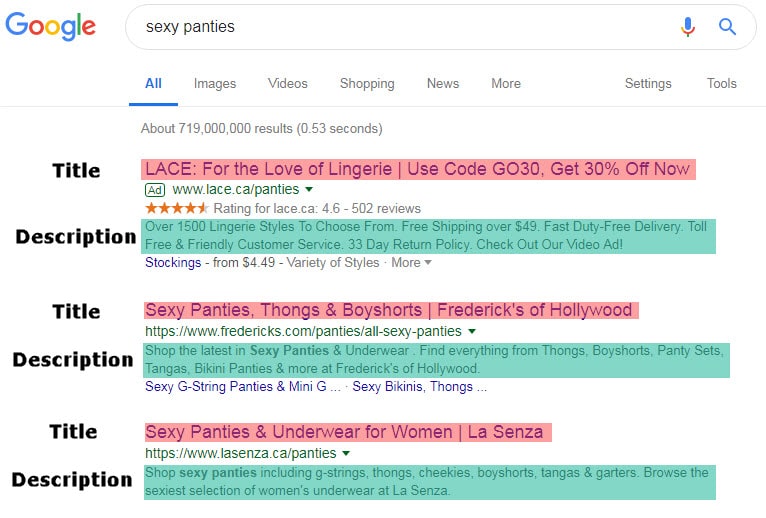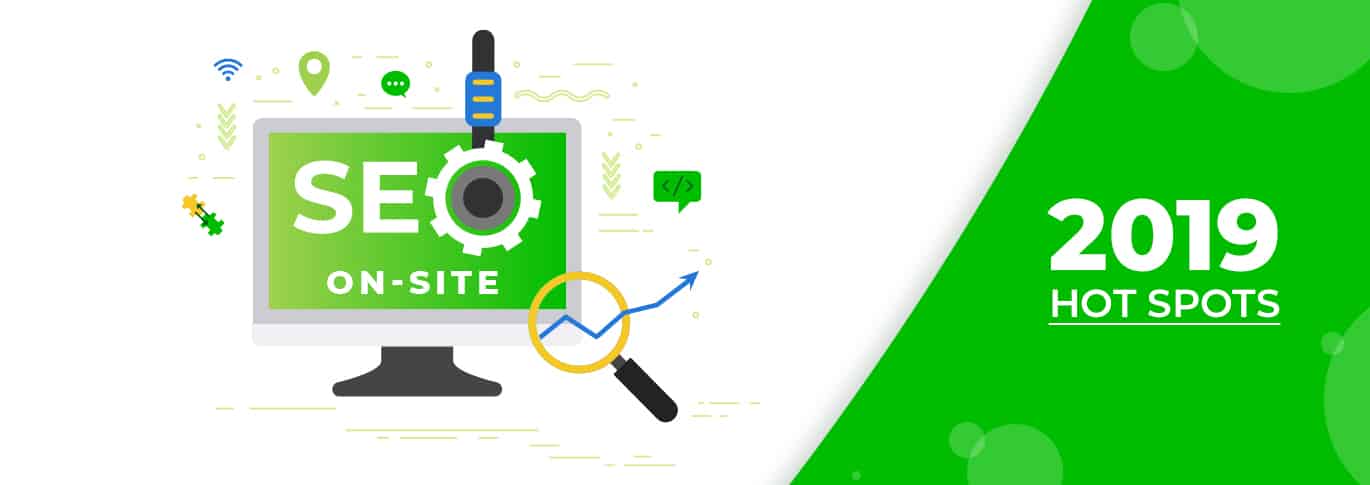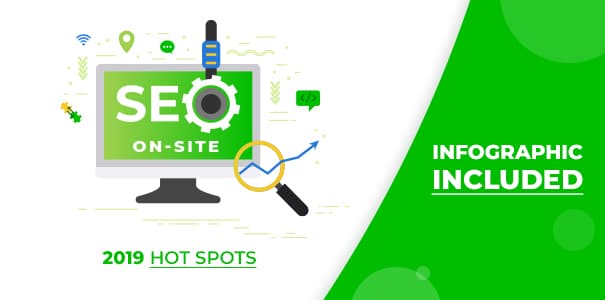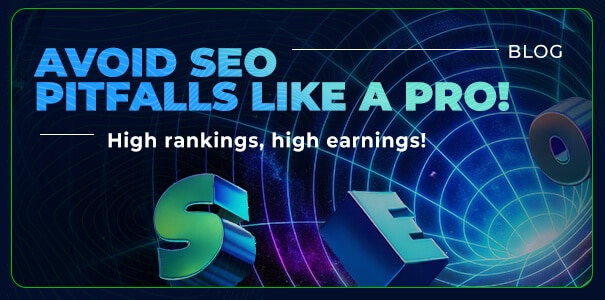
“If you build it, they will come.”
You might have heard that famous quote from the popular 1989 baseball movie Field of Dreams. Unfortunately, lots of webmasters and creators still think all you have to do is create awesome content online for people to show up in droves on your pages, loving what they see and ultimately converting into sales.
That couldn’t be farther from the truth. Without a solid Search Engine Optimization (SEO) plan, all your efforts could be for naught. Thing is, your neat idea has probably been put to the test several times already with varying results.
Want to create a blog about awkward family photos? Too late. Having fun with classifieds? Old. If there’s a relevant GIF from The Simpsons for mostly everything, just imagine how much of a drop in the bucket your content is compared to the vastness of the Internet.
Feeling down yet? You shouldn’t. Getting noticed is a lot of work but it's by no means impossible by any stretch of the imagination. Like anything in life, ebbs and flows are to be expected ... but truisms still remain: great content is one of the key pillars of your marketing strategy and SEO is the glue that holds everything together.
When optimizing your website to rank higher in search engines, there are so-called on-site SEO “hot zones” you can focus on. As you can guess, we spend a fair amount of time trying to find new ways to climb our way to first page results. Google's #1 result for any given search has ~2x times the Click-through rate (CTR) of the #2 position, and if you’re not on the first page it’s unfortunately as good as dead.
On-site SEO is how you’ll be optimizing your website in order to rank higher on search engines like Google. Off-page or off-site SEO, for its part, is more about actions taken outside one’s own website aimed to positively influence search rankings and SEO. You can read more about this technique in our link building strategy post.
Where are the on-site SEO hot spots you’re talking about?
There are six main areas where you can tweak things just enough to see big results within search engines.
Meta Title and Description
In most cases, your title tag and description are the first things users notice on search engine results pages (SERPs). They deliver crucial information about your websites and each unique page, so make sure you use clear and concise wording.
Search engines use your meta titles and descriptions to understand what your website is all about. They should contain highly relevant keywords related to your niche and call-to-actions (CTAs) to entice people to click on your links.
Example:

HTML Headings
Headings are another tool at your disposal to maximize the effectiveness of your pages and better organize your content. Headings are defined by the <H1> to <H6> tags in HTML, from most to least important.
The reason headings are so fundamental to SEO is because search engines have a fondness for using them to index the structure and content of your pages. If you’re using WordPress, most themes apply a default <H1> heading to your articles’ titles so you don’t need to. However, other headings are your job to properly include in your pages.
As a general rule of thumb, you’ll want to structure and split your content into paragraphs divided by <H2> subtitles. Just like book chapters, headlines help the reader comb through your text without feeling lost or annoyed. Keywords help although it would be ill-advised to stuff them all over the place hoping to get more clicks, a technique called keyword stuffing—i.e. low effort spam.
Text formatting
For best SEO results, begin improving the structure of your copy immediately. Understanding that writing for the web is fundamentally different than any other medium makes the difference between a successful piece and one that fails to grab the reader’s attention.
It’s always a good idea to include your focus keyword (i.e. what you want to rank for) right from the start and quickly set up your narrative: users have a bajillion reasons to not bother with your content, so the last thing you want is to tease them before they get to the crux of it all.
Headings also come in handy to space out your content and prepare readers for what’s to come. This is also useful to skim through parts you don’t care about. Be aware that the first sentence of a paragraph sets the pace while others will go into more details about this idea (one paragraph = no more than one idea). It’s also why having your keyword at the beginning of a sentence yields better results.
Internal Links
To navigate your website, Google sends a bot (or spider, same difference) that crawls your links. The journey begins at your homepage (otherwise known as your index file).
From there, the bot tries to follow a link and starts gathering data—thus figuring out the relationship between different pages and assigning a value to said content.
The homepage is like your headquarters and where links are the most valuable. That’s why news outlets and blogs feature the latest content on the frontpage: Google finds these posts more quickly and typically gives these a ranking boost.
A great internal link strategy begins with your most important page—home—at the top of the pyramid, followed by cornerstone content — pages with very high value for the users.
For instance, one such post on CrakRevenue is called “SEO: 6 Best Tools to Skyrocket your Traffic.” Our goal is to rank for keywords like “best SEO tools” in Google. Each time we link to that page with related content from other articles, Google understands our cornerstone content contains more valuable information and assigns it a greater value, thus boosting its ranking power.
Some links are also actually detrimental to your ranking. Let’s say you kept the meta data links on your homepage so your staff can easily access the admin login to your website. You don’t want these links to interfere with your other, actually valuable content. So what you need to do in that case is to “no-follow” these links: manually signaling Google’s bot not to follow specific links so you don’t lose link value.
Be aware though that simply adding a no-follow tag doesn’t mean Google can’t index them in its search engine, in which case you’d need to use a “no-index” tag.
Image Alt Tags and Filename
Whenever you upload a new image to your site, by default its title will be the same as the filename and the alt tag will usually be left empty.
This Google Images “best practices” page suggests you add great descriptions (or alternative text) to your images so you can start receiving higher quality traffic to your site
Search engines don’t “see” the images you upload, so context plays an important role with extremely relevant search terms. In that sense, it’s also better to give your images great names as 1001.jpg won’t get the same traction as, say, marketing-terms.jpg.
It’s all about helping Google find your content and share it to its users.
URL structure
There are quite a few things you can do to contribute to the overall success of your website and some of them care about your URL structure—what you see in the browser after https://. Here’s some tips to get better SEO with your URLs.
- Add some keywords that match the content of your page: if you’re doing a Top 10 of the best camgirls in 2019, it would be wise to include “camgirl” (your focus keyword) in the URL. Keywords communicate what the page is about to search engines and can pop with a relevant search query.
- Make the URLs easy to read: if a human can’t instantly understand what the page is about, a bot won’t do any better. This means you need to trim the fat, i.e. no super long URLs with multiple parameters.
- Keep your URLs short: while search engines won’t scoff at 100+ character URLs, these make for a very poor user experience. Shorter URLs have lots of benefits, from being easier to share on social media - to being great “type-in” candidates (yes, people still do that!).
- Don’t worry too much about stop words: some SEO gurus will tell you to avoid stop words (all, for, it, the, etc.) like the plague. In fact, the only reason why you’d want to have fewer of them is to keep your URLs short. Avoiding such words can have a perverse effect, making them read differently than their intended purpose. For example, between /how-to-become-a-camgirl vs. /become-camgirl, which would you choose? The former reads better and makes more sense, despite being longer and using stop words.
Bonus on-site SEO techniques to achieve better rankings in search engines
Applying the advice from this post won’t give your website the first rank on search engines, but they sure help getting there. If you’d like further help, we’ve prepared a quick checklist of great things you can start doing right now with your on-site SEO.
Understand the value of 1,000+ word posts
although plugins like Yoast tell you 300 words is great, data from Medium indicates that the sweet spot is 1,600 words or 7-minute posts. However, don’t go thinking all your posts should be this long. It’s important to respect your own style and deliver what you feel is worth a read … from short posts to the more meaty ones.
Avoid duplicate content
Google does not penalize for duplicate content (as in, identical content that appears in different URLs on the same website) because there’s usually no malicious intent involved. It can still create problems for search engines and SEO, however. Mainly, robots won’t know which page is more valuable, which translates into a loss of traffic and rankings for you.
To avoid problems, you’re going to canonicalize URLs: set a 301 redirect from the duplicated content to the page you’re working towards a better ranking.
Another option at your disposal is to use the rel=canonical attribute specified at the end of a URL. This is used to tell search engines which page is the “real deal” so search engines can give them more weight. Consolidating link signals will make sure bots don’t spend time crawling pages where it’s not as beneficial as your preferred URL.
Multimedia helps a lot
Engaging your users with lively pictures and videos is one way to make sure your bounce rate stays low. Google’s AI algorithm, RankBrain, gives weight to how users are interacting with your content and other factors.
Speed optimization
Make sure your website is blazing fast or you’re going to bleed traffic.
Want more? Be sure to check out our SEO archive for even more tips and tricks in order to achieve better rankings in search engines with on-site and off-site SEO.



